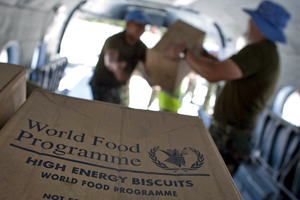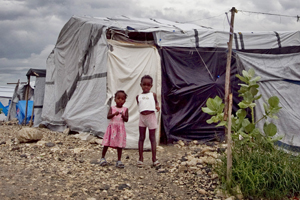Research Brief
Can the Coordination of Aid Cut Costs for Donors?

A common theme in the literature on aid effectiveness is that the character of the relationship between donors and recipients is a crucial determinant of how effective the provided aid is. One important dimension of this relationship is the extent to which donors in a certain country coordinate their efforts. This has a direct impact on the transaction costs of development aid, but also effects governance in recipient countries. In the light of the Paris Declaration, which outlined the strategy for improving aid effectiveness, it is important to attempt to understand the impact donor coordination has on the costs associated with aid delivery, and the way in which aid is allocated. In the WIDER Working Paper 'International Coordination and the Effectiveness of Aid', Arne Bigsten and Sven Tengstam address this question. First, they examine the effect greater donor coordination could have on four key dimensions of the Paris Declaration; harmonization, ownership, alignment, and accountability. Second, they provide an analysis of the cost-savings and increases in aid efficiencies that greater donor coordination could provide.
The Paris Declaration and Aid Effectiveness
The Paris Declaration's (PD) agenda is broad in scope and covers both how donors relate to each other and the relationship between donor and recipient. Bigsten and Tengstam are interested in the former relationship, that which exists between donors. This relationship is explicit in the harmonization principle of the PD which is precisely targeted at improving coordination between donors. However Bigsten and Tengstam argue that greater donor coordination could also help promote some of the other principles of the PD.
Bigsten and Tengstam point out that recipient countries are much more likely to be able to take ownership of their own development if they are dealing with a large cohesive group of donors, rather than with multiple donors with numerous different requests. Furthermore Bigsten and Tengstam argue that greater coordination may make the goal of alignment easier to achieve. Donors are more likely to base their development policies on the recipient countries’ priorities if they are acting together, and not pursuing individual nationalistic priorities. In addition to this a cohesive group of donors is less likely to try to promote development through disparate projects, and much more likely to use the systems the recipient countries already have in place for managing development projects.
Mutual accountability may also be enhanced by coordination. Bigsten and Tengstam suggest that the reciprocal accountability the PD promotes will be far easier to achieve in a situation where the reciprocity is between a cohesive group of donors and a recipient, than in a situation where the recipient has multiple commitments to different donors.
Clearly then greater cooperation could help donors and recipients to abide by the principles set out in the PD. However Bigsten and Tengstam believe that coordination can also have concrete effects both on the transaction costs associated with aid delivery, and on the way in which aid is allocated amongst potential recipients.
Donor Coordination and Transaction Costs
One key way donor coordination can make aid more effective is through the reduction of the transaction costs associated with its distribution. Bigsten and Tengstam aim to assess the savings donors can make both by focusing on fewer countries, and by shifting their aid from support for projects to support for programmes. The current figure for the administrative cost of aid stands at US$6,113 million.
Bigsten and Tengstam point out the surprising fact that the average donor country has over a hundred partner countries. The authors find that if this figure was reduced by one standard deviation, from 100 to 63, then administrative costs could be reduced by around 20 per cent, a huge saving of US$1,223 million. While the PD does not provide any specific target regarding how much this should be decreased by it is clear that this is a key area in which donor coordination could lead to greater aid efficiency.
A particular focus of the PD is to move to programme-based assistance from project-based and technical assistance. The target is to have 66 per cent of aid going into programme assistance; in 2009 the level was at 39 per cent. Bigsten and Tengstam calculate that by reducing spending on projects and increasing programme assistance to 66 per cent of aid a saving of US$915 million could be made. In sum the authors find that by reducing the number of partner countries and by shifting towards programme, rather than project aid, total donor savings of US$2,138 million could be made. Clearly this money could be better used if targeted towards reducing poverty rather than spent on inefficient transaction costs.
Donor Coordination and Aid Allocation
Greater coordination may also allow donors to improve the allocation of resources across countries. Developing countries and donors stated in the Accra Agenda for Action that they would address the issue of countries that receive too little aid. Bigsten and Tengstam suggest that the important questions are what would optimal aid allocation look like, and how much greater poverty reduction could be achieved if aid were allocated optimally.

Bigsten and Tengstam point out that development aid has been found to have decreasing returns with regard to it as a share of GDP. Assuming that donors want to allocate among countries in such a way that it maximizes poverty reduction the authors find that over half of the total aid budget should be transferred from 'aid darlings' to 'aid orphans'. This calculation does not take into account the potential effect the quality of governance in a given country could have on aid effectiveness. However even when this is taken into account efficiency can still be improved significantly by the reallocation of aid.
It appears then that greater aid coordination would reduce donor transaction costs, and increase the possibilities of achieving the mutual goals of donors and recipients. Given the likely benefits it is important to question why donor movement towards coordination has been minimal. The answer is that donors have aims other than maximizing the alleviation of global poverty. Donors want to maintain control of their aid distribution in order to assert political influence; they want to be present in a broad range of countries so that this political, and economic, influence is spread out. Clearly these considerations place limits on the extent to which donors are willing to coordinate. Coordination can take a number of forms, but in the end, the extent of coordination will depend on the political goals of the participating countries.
 Join the network
Join the network